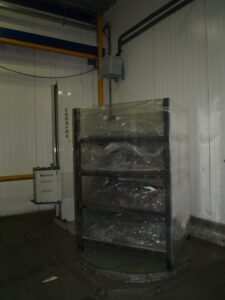Category
Textiles
Start
2023
Status
Active
Tailor-made Treatment of Sailcloth
Only a limited number of sailcloth assemblages has been excavated in Europe. Due to their rarity and the potential information they can provide regarding sailing and rigging in the past, they are considered to be of great scientific importance. Yet, absence of know-how on the treatment of their fabric has impeded any further analysis. The outcome of this stalemate is that the finds remain inaccessible for research or display, while the continuing storage of these finds may affect the fabric in negative ways. One of the biggest problems for the development of a standard treatment method, is the absence of representative precedents. The only well documented treatment of a similar find, are the Vasa sails. Yet, this treatment from the 60s is no longer in correspondence with today’s conservation ethics. Other studies on cellulose maritime textiles are available, yet the number of recent studies is limited and not always representative for this find. Treatment of the Mary Rose and Jeanne-Élisabeth sails are not extensively published. In addition, opinions about best practices regarding the treatment of such finds differ among restorers.
The material to be examined is hemp fabric sailcloth from the late 16th century Scheurrak SO1 shipwreck. It was recovered during underwater excavation in 1990 and has been stored in a freezer since Since the fibers are weakened, it is assumed that any intervention will involve some form of mechanical damage. However, ‘doing nothing’ can potentially cause more damage in the long run, and keeps the object inaccessible. Over 10 years ago, a first and preliminary study on the potential treatment of the SO1 sail was executed on a small sample. This confirmed that the fibers are extremely vulnerable, making the textile so fragile to the extent that it can barely be handled by hand once defrosted.
By testing the feasibility of a selection of viable treatment methods – carefully selected based upon extensive literature study and correspondence with peers – a tailor-made treatment for waterlogged (hemp fabric) textiles from archaeological underwater context will be developed. The relevance is threefold. First, the developed methodology will allow to make the SO1 sailcloth accessible for research and display. Secondly, the methodology will allow to prevent further damage to the SO1 sailcloth caused by its current storage situation. Finally, the development of this methodology will prevent similar situations in the future, by providing the necessary know-how that will allow the treatment of (hemp fabric) textiles and other cellulose fiber finds shortly after their recovery from archaeological underwater contexts.

Current storage of the sails (© Batavialand)

First testing of textile material in 2010 (© Batavialand)